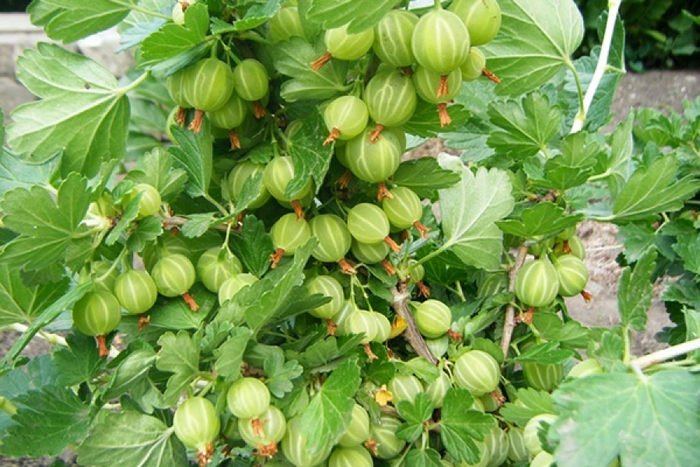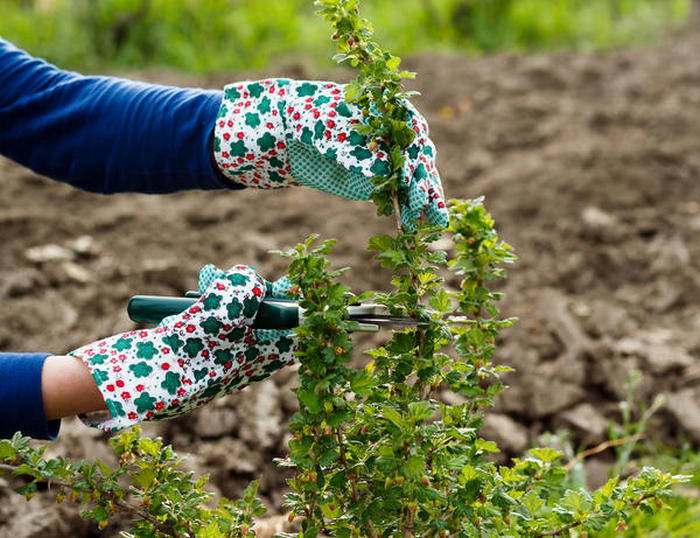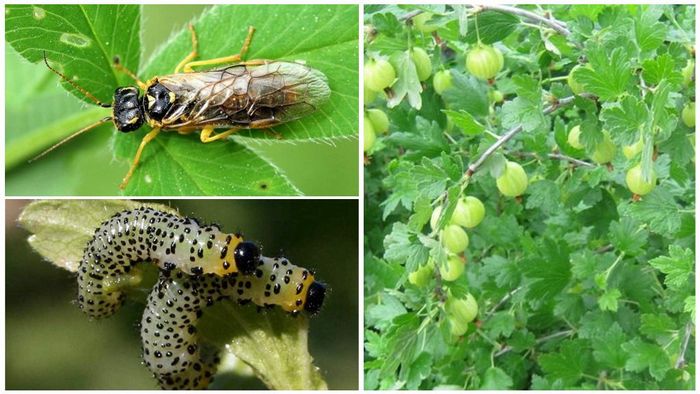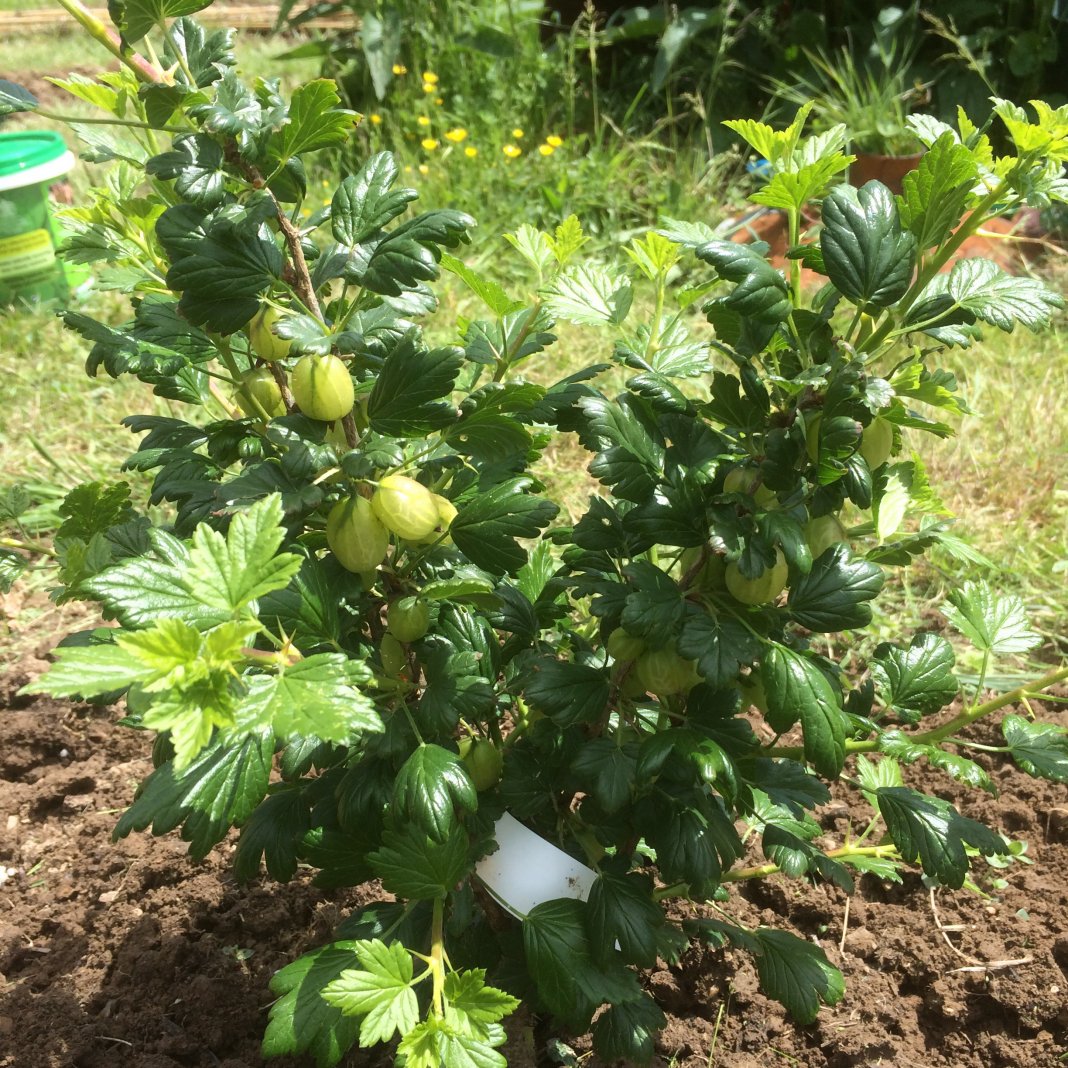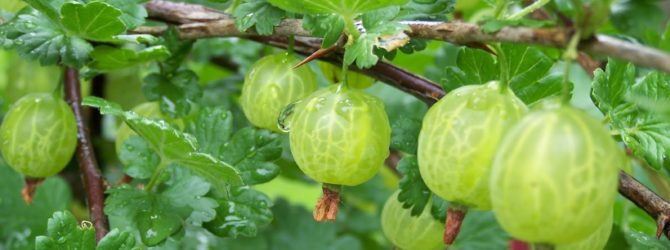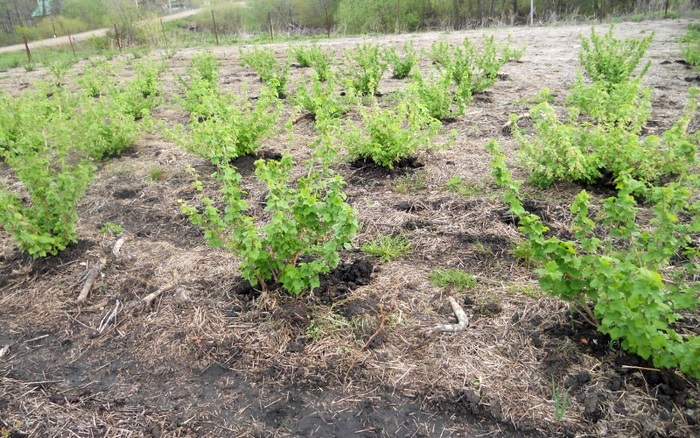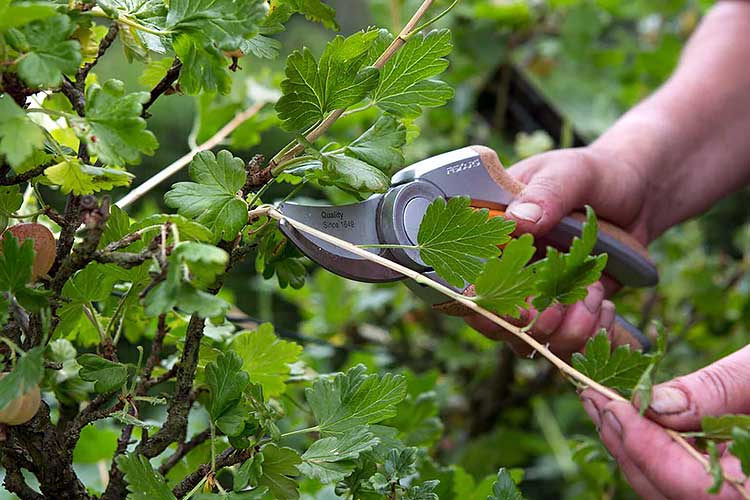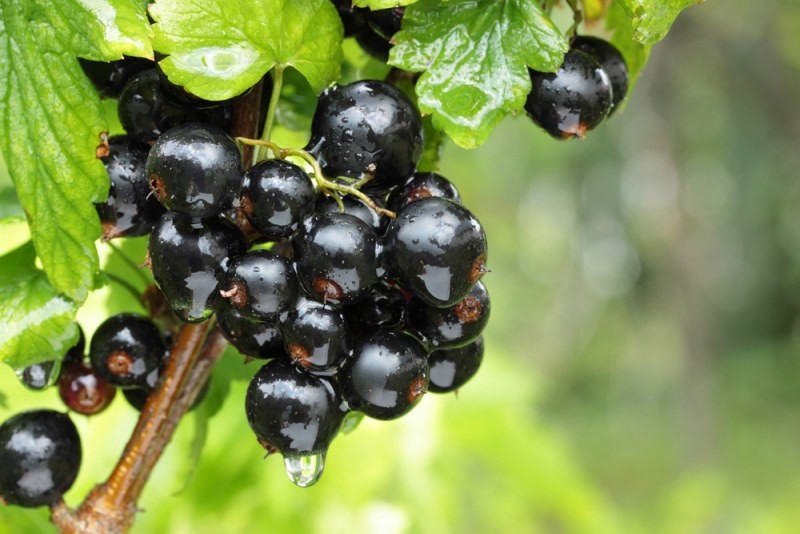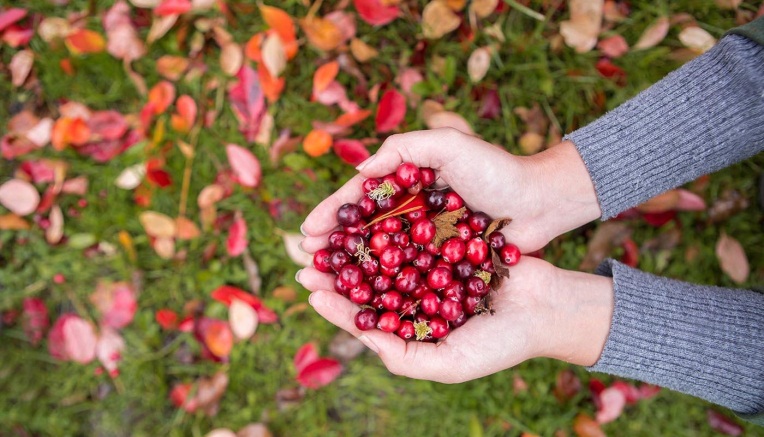Content:
On the territory of Russia, gooseberries can be found in the garden everywhere. This bush is doing very well in our climatic conditions. Its berries have an extraordinary sweet and sour taste, sometimes with hints of fruit (grapes, kiwi). The abundance of micro- and macronutrients in the composition makes gooseberries truly valuable.
Seat selection
Growing gooseberries in your backyard can be a very easy task as long as there are some conditions that are important for the good development of this plant. First of all, you need to choose the right place for landing. Gooseberry - light - and heat-loving shrub. It is best planted in open areas, near a house on the bright side, or near tall trees that do not provide thick shade. It is also worth considering the level of groundwater occurrence, since the gooseberry does not tolerate waterlogging and waterlogging of the soil. You can artificially create a drainage layer or plant bushes in high beds.
Soil acidity is also of great importance. With an acidity level above 6 Ph, it is worth either choosing another place, or liming it at the rate of 0.2 kg per 1 m2.
The gooseberry is very fond of free space, so you need to make sure that there is room around the bush for other objects or plants. Also, the free arrangement makes it easier to harvest later.
The observance of the growing conditions depends on how many times in a life gooseberries bear fruit. Bushes grow in one place for 30-40 years, of which active fruiting lasts about 10-12 years.
Landing features
- Before growing gooseberries, you need decide on the landing date... It is permissible to plant cuttings in both spring and autumn. In the spring, planting must be carried out before the start of sap flow, otherwise the bush will not take root. The peculiarity of the gooseberry is that it comes out of hibernation very early, at a temperature of + 5˚C. Autumn planting is preferable for beginners, since the probability of rooting is quite high here. 1.5 months before the first frost, you need to plant a seedling on the site. During this period, the root system will have time to overgrow with new roots;
- Maintaining gaps - a very important condition for growing gooseberries. Depending on the variety, the bushes grow from 60 to 200 cm. Therefore, a distance of 2 m should be left between the planting holes;
- Pit preparation. Before planting, a hole is formed 50-60 cm deep and 60-70 cm in diameter. If the seedlings are very small, then the hole may be smaller, about 40 cm in width and depth. To avoid stagnation of water and possible decay of roots, a preventive drainage layer is laid on the bottom of the pit. It is enough to lay out 1-2 cm of expanded clay to significantly improve the movement of water. Next, fertilizers are laid: 1 part of organic matter accounts for 3 parts of the earth, as well as a potassium-phosphorus composition, diluted according to the instructions;
- Processing of planting material. The seedling is carefully inspected for the presence of diseases, pests and damage. Dry or rotten roots must be removed and the cut site disinfected;
- Planting a bush. On heavy soils, the gooseberry bush is installed exactly in the hole; on sandy loose soils, the seedling must be laid with a slight slope. The soil around the trunk should be tamped down and watered very generously.
Care and cultivation
To be productive every year, you need to know how to grow gooseberries in the country:
- Soil cultivation. The development of the bush largely depends on the state of the soil. Periodically, the space near the trunk must be dug to a depth of 10 cm. All weeds must be removed, large lumps must be broken and the top layer loosened;
- Fertilizers for 1-2-year-old seedlings are not applied, since they have enough nutrition. In subsequent years, the bushes need to be fed 3 times a season. Every year it is necessary to apply fertilizers in 3 stages:
- Nitrogen fertilization should be started at the beginning of the growing season so that the bush can grow a sufficient amount of green deciduous mass. Pour 15 liters of solution under each bush (according to the instructions);
- In order for the fruits to gain the maximum volume, you need to feed the gooseberries with potassium. At the time of the formation of ovaries, 10 liters of a solution of potash fertilizers, diluted according to the instructions, are introduced under each bush;
- Shrubs depleted at the end of the season need rest and energy replenishment. For the winter, you can feed the gooseberries with rotted manure, humus or compost.
- Pruning bushes. The first pruning is done on the day of planting. Its goal is the rapid and active development of new shoots. Each branch on a newly planted bush is pruned to the fifth bud.
In the future, pruning should be carried out immediately after the snow melts. The main thing is not to miss the moment of the beginning of awakening, since gooseberries come out of wintering already at + 5˚C. If the moment is missed, then you should not touch the plant, it is better to leave the procedure until autumn. But even here you need to wait for the right moment when all the leaves fall from the branches.
Pruning is always done on the outside bud so that the bush grows outward rather than thickening.
Bush formation methods:
- Trellis. At the edges of the bed, pillars are installed, a wire or twine is tied to them in 3 rows, you can pin 3 rows of perches. The bottom row should be formed at a height of 0.4 m above the ground, the next rows - every 0.3 m. As the crown develops, the branches are tied to a trellis at a distance of 0.2 m from each other. For each bush, you need to choose the 6-7 most powerful branches that will be tied. The rest can be safely cut with pruning shears at the root. Supporters of this method note that the berries grow much larger and tastier;
- Stamp. Most often, small trees are formed in this way. The thickest stem is chosen from the gooseberry, which will play the role of the trunk. All remaining branches are removed. The maximum height of the standard bush is 1 m, you should not do it higher, since you will have to create supports. Once a year, a correction is made by removing new branches that interfere with the formation of an even crown;
- Bush. In this case, pruning is thinning. It is enough to leave 4-5 branches, everything else can be removed. First of all, shoots growing close to the ground or deep into the bush are removed;
Regardless of the shape chosen, sanitary pruning is done annually, in which dry, rotten, broken branches are cut off.
Pest and disease control
Most pests can be eliminated in early spring. In April, when the snow melts, each bush is watered with boiling water. After this procedure, all larvae die. Next, you need to clean the site, collect all the leaves, branches that lay on the ground after the snow melted. It is in them that moth larvae winter. Also, gooseberries are often attacked by sawflies and aphids; powdery mildew is most common among the diseases.
Adherence to agricultural practices is usually the best prevention against parasites. Loosening the soil, removing weeds, burning old branches and feeding on time all help in pest control. If insects or fungus attacked the gooseberry, then the easiest way to deal with them is with the help of chemicals, for example, Nitrofen, Topaz or Fundazol.The most important thing is to comply with the processing time, clearly before and after flowering.
Fruiting, increased yield
Every summer resident is worried about the question of why gooseberries do not bear fruit, the reasons may be as follows:
- Pollination difficulties. Gooseberry flowering sometimes occurs during a period when there is no rainfall for a long time. As a result, pollen cannot adhere, which means that the ovary is not formed;
- Late frosts. If, during the beginning of flowering, frost unexpectedly returns, then the flowers freeze;
- Irregular watering. The plant loses its yield both with excessive moisture and during a dry period;
- Lack of dressing. Only the first two years, the gooseberry can not be fertilized, it has enough nutrients. Starting from the third year, top dressing is a prerequisite for growing bushes;
- Diseases and pests can completely destroy the fruit.
How to increase your gooseberry crop:
- Pinching branches that have formed in the current season;
- Planting several bushes on the site. A single gooseberry gives out only half of the possible yield; in the presence of adjacent shrubs, the yield increases 2 times;
- The gooseberry has a superficial root system, so it is necessary to clear the area near the trunk of weeds and loosen it. These procedures have a beneficial effect on the development of the bush, saturate the roots with oxygen;
- Regular complex feeding, starting from the third year of life. During the first 2 years, seedlings develop due to fertilizers applied at the time of planting. In the third year, stocks are depleted;
- Crown formation. Gooseberry responds well to all types of pruning: formative, sanitary or thinning. The excess or bad parts of the plant are removed and the bush becomes more fruitful.
At the time of buying seedlings, it is worth deciding why to plant gooseberries. If the bushes perform a decorative function, then the plant will not cause much trouble. It is enough to look after the crown to keep the appearance neat. Growing gooseberries for the sake of the harvest requires a lot of effort and expense. You need to carefully consider all the nuances so that the bushes can bring the maximum amount of berries.
